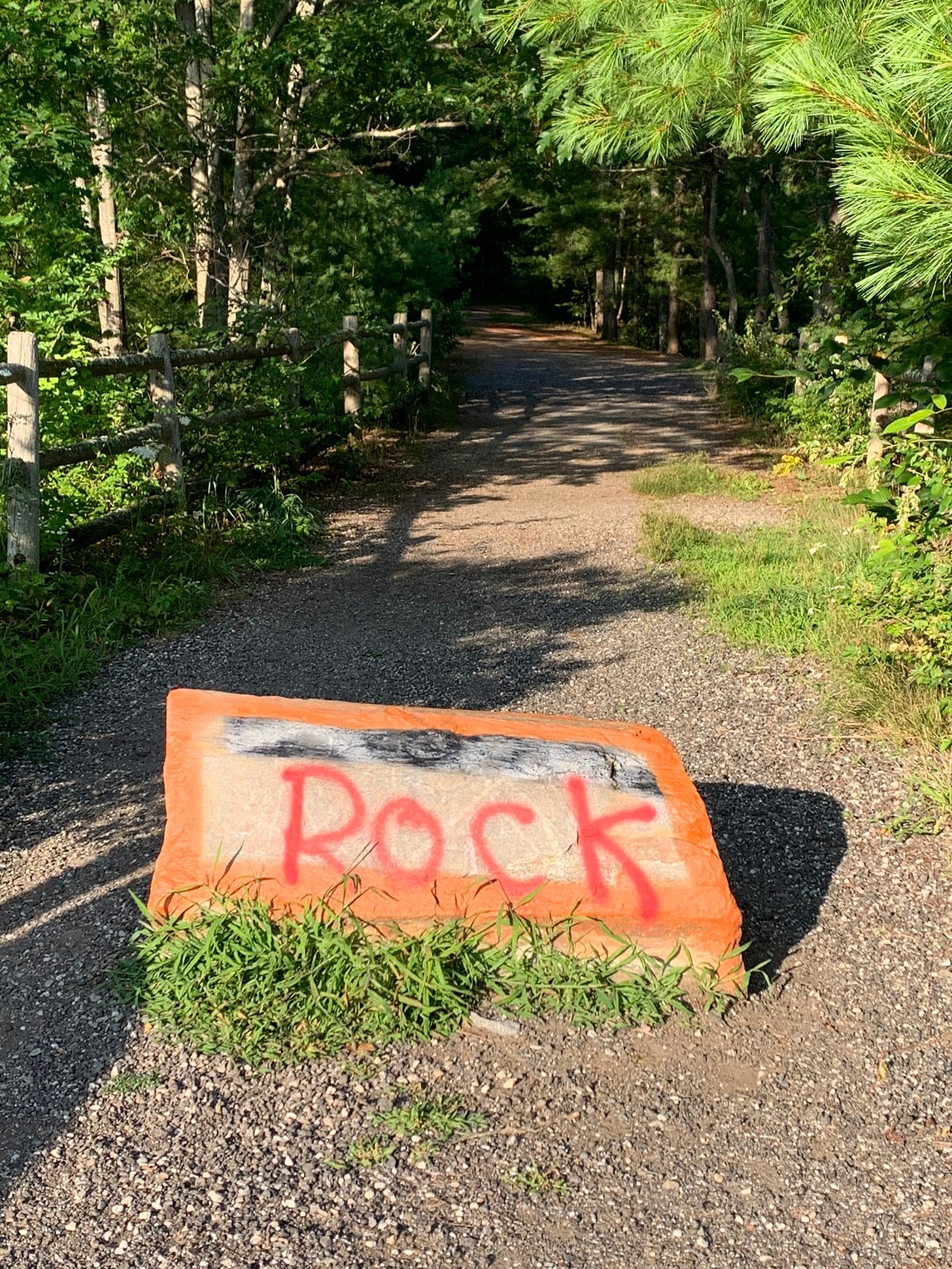027 Not "the best of"
Welcome back (or welcome)!
We’re out of town.
I had every expectation of sending you a list of some of the most helpful newsletters from the year so far. It would be simpler than writing something new, I thought. It would be a way to keep the commitment I have to myself and to you, a commitment to provide stories and tools to help you be more comfortable as you help others in hard times.
Sometimes things are not as obvious as they seem. Curated lists of resources are not quick.
My friend Rob and I were out walking the other day. It’s a trail he walks every day, a trail I’ve never been on. In the middle of the trail, at the end of a bridge, is a granite block.
It’s helpfully labelled “Rock”. As if that isn’t obvious.
It looks like graffiti, more of people showing no respect.
In the moment, it feels like a simplistic, rude interruption to an otherwise friendly walking trail.
Being Maine, of course, at other times of the year this trail has a different kind of use, different kind of beauty. The woods and the trail are covered with snow. And the users of the trail move from walkers to snowmobilers.
In the whiteness of a trail, the bright orange edges, the bright red “Rock” are no longer rude. They are life-savingly friendly.
Context, friends, context. Timing, friends, timing.
When we’re trying to be helpful, we can adjust the complexity of our help and we will be more helpful.
And know that what might be obvious to you, may be helpful to someone else.
A handful of newsletters about attending to context and timing.
For example, when we’re in the middle of grief, our capacity to think clearly is overwhelmed. We need space to think and we need simplicity.
Of course it's hard to think - and other ways to be helpful for someone who is grieving.
When we’re in the middle of grief, we want someone to acknowledge that our pain is real.
Helpful in loss: We want to be told, “This is hard.”
When we get a bad diagnosis, we can use some permission to focus on fewer things.
A working list for life after a difficult diagnosis.
When we’re in the middle of pain ourselves, the very first thing that comes to mind is Silk’s Ring Theory--which has nothing to do with silk. It's worth the read. And gives you permission to tell people to shut up. Ring Theory: How not to say the wrong thing - Los Angeles Times (latimes.com)
And I wrote about some ways that relief happens.
+++
Thanks for being one of the more than 300 people who subscribe to this always free newsletter. I’m grateful for the encouragement and feedback you provide.
And, as I said before, know that what might be obvious to you, may be helpful to someone else.
See you next week.
Jon
By the way, if you know someone that would find this helpful, please forward this to them.



